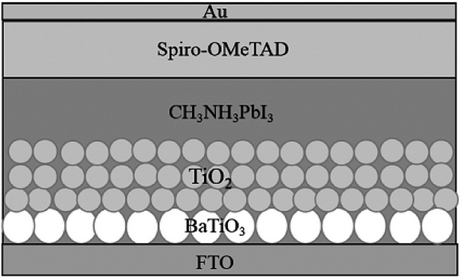Crossref Citations
This article has been cited by the following publications. This list is generated based on data provided by
Crossref.
Jahanbakhshi Zadeh, Naser
and
Borhani Zarandi, Mahmood
2021.
Interfacial engineering of mp-TiO2/CH3NH3PbI3 with Al2O3: Effect of different phases of alumina on performance and stability of perovskite solar cells.
Journal of Materials Research,
Vol. 36,
Issue. 24,
p.
4938.
Ahmmed, Shamim
Aktar, Asma
Rahman, Md Hafijur
Hossain, Jaker
and
Ismail, Abu Bakar Md
2021.
Design and simulation of a high-performance CH3NH3Pb(I1–xClx)3-based perovskite solar cell using a CeOx electron transport layer and NiO hole transport layer.
Semiconductor Science and Technology,
Vol. 36,
Issue. 3,
p.
035002.
Zhang, Long
Fang, Ming
Fu, Lian She
Yang, Li Zhen
Sang, Li Jun
Wang, Dong Dong
Liu, Zhong Wei
Chen, Qiang
and
Ostrikov, Kostya Ken
2021.
Ultrathin HfAlO ferroelectrics enhancing electron transport and perovskite solar cell performance.
Journal of Materials Research,
Vol. 36,
Issue. 9,
p.
1855.
Zong, Zhifang
Chen, Depeng
Zhao, Chunxiao
Tang, Gang
Ji, Yilong
Zhang, Hao
and
Lv, Zhong
2021.
Application of Ce–Eu/TiO2 phase change material as the wall material to improve the indoor environment.
Journal of Materials Research,
Vol. 36,
Issue. 3,
p.
615.
Aleksić, Katarina
and
Marković, Smilja
2022.
Perovskite solar cells: Recent development and perspectives.
Tehnika,
Vol. 77,
Issue. 6,
p.
667.
Mazur, Olga
Tozaki, Ken-ichi
Yoshimura, Yukio
and
Stefanovich, Leonid
2022.
Influence of pressure on the kinetics of ferroelectric phase transition in BaTiO3.
Physica A: Statistical Mechanics and its Applications,
Vol. 599,
Issue. ,
p.
127436.
Zhang, Hailin
Ji, Xu
Yao, Haoyi
Fan, Quanhai
Yu, Bowen
and
Li, Jishu
2022.
Review on efficiency improvement effort of perovskite solar cell.
Solar Energy,
Vol. 233,
Issue. ,
p.
421.
Manjunath, Vishesh
Bimli, Santosh
Shaikh, Parvez A.
Ogale, Satishchandra B.
and
Devan, Rupesh S.
2022.
Understanding the role of inorganic carrier transport layer materials and interfaces in emerging perovskite solar cells.
Journal of Materials Chemistry C,
Vol. 10,
Issue. 42,
p.
15725.
Gu, Peng
and
Chen, Peiyao
2023.
Enhanced Dielectric Properties of Polymer Composites with Polar Fe2TiO5 and Non-polar Diamond Nanofillers.
Journal of Electronic Materials,
Vol. 52,
Issue. 6,
p.
4139.
Shah, N.
Shah, A. A.
Leung, P. K.
Khan, S.
Sun, K.
Zhu, X.
and
Liao, Q.
2023.
A Review of Third Generation Solar Cells.
Processes,
Vol. 11,
Issue. 6,
p.
1852.
Karamzadeh-Jahromi, Milad
Izadifard, Morteza
and
Ghazi, Mohammad Ebrahim
2024.
Tailoring the Functional Properties of LSMO-BTO Nanocomposites: A Sol-Gel Synthesis Approach and Comprehensive Characterization.
Ceramics International,
Dong, Kaiwen
Yang, Guangyue
Wang, Minhuan
Bian, Jiming
Zhu, Lina
Zhang, Fengshan
Yu, Shitao
Liu, Shiwei
Xiao, Juan‐Ding
Guo, Xin
and
Jiang, Xiaoqing
2024.
Impact of Dipole Effect on Perovskite Solar Cells.
ChemSusChem,
Priyanka, Eluri
and
Muchahary, Deboraj
2024.
Performance improvement of perovskite/CIGS tandem solar cell using barium stannate charge transport layer and achieving PCE of 39 % numerically.
Solar Energy,
Vol. 267,
Issue. ,
p.
112218.






